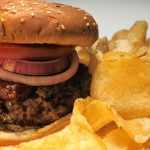
If your children are well-behaved, do they stand a greater chance of having healthy, happy lives as adults?
A new study says yes. read on >

If your children are well-behaved, do they stand a greater chance of having healthy, happy lives as adults?
A new study says yes. read on >

It’s no surprise that many Americans are working overtime. Conservative estimates say that 19 percent of adults put in 48 hours or more a week and 7 percent log in 60 or more. But what you might not realize is that, after a certain point, extra hours could be hurting both your health and your productivity. In addition to a variety of medical issues and unhealthy lifestyle choices associated with long hours, a British study used cognitive tests to show that working 55 hours a week was associated with lower scores in vocabulary and reasoning, and can lead to cognitive problems as you get older. Adding insult to injury, research done at Stanford University found that, besides the personal toll that overtime takes, you probably aren’t working effectively. Productivity starts to fall considerably after the 50th work hour of the week and gets worse with every additional hour. So, if you put in 70 hours a week, you’re not likely to accomplish anything worthwhile during those last 15. One reason for this is that you might be too stressed or tired to function at peak level since working overtime usually results in your getting less sleep — and that in turn leads to making mistakes that can set you back at work. Take action to improve the balance between your personal life and your work… read on >

A smokeless method of vaporizing and then inhaling pot packs a much more powerful punch than simply smoking weed, researchers say. That could raise safety concerns for users — driving, for example. Marijuana vaporizers heat pot to a temperature just below combustion, allowing people to inhale the intoxicating chemical THC from the plant material without breathing in any smoke. This method produced much more intoxication in a small group of test participants than smoking the same amount of marijuana through a typical pot pipe, according to the report published online Nov. 30 in JAMA Network Open. The study participants also had more adverse effects associated with their pot use when they used vaporizers, and had more pronounced impairment of their ability to think and control their movements, the researchers said. “It’s often a fine line between someone getting the drug effect they desire and having a drug effect that’s too strong, and maybe produces paranoia and adverse effects that are uncomfortable for the person,” said lead researcher Tory Spindle. “That sort of thing might be more likely with vaporizers,” he added. Spindle is a postdoctoral research fellow at Johns Hopkins University School of Medicine, in Baltimore. These vaporizers aren’t to be confused with “vaping” — a term used to describe electronic cigarettes. Survey data has shown that vaporizing is becoming a more popular method of… read on >

In a finding that might come as a surprise, a new study suggests that people may stay in unfulfilling relationships because they feel they’re doing their partner a favor. People trying to decide whether to end a relationship consider not only themselves but also how important the relationship is to their partner, according to the researchers. “The more dependent people believed their partner was on the relationship, the less likely they were to initiate a breakup,” lead author Samantha Joel said in a University of Utah news release. Joel was an assistant professor in the department of psychology at Utah when the study was conducted and is now an assistant professor at Western University in Ontario, Canada. This the first evidence that altruism may play a role in decisions about disappointing romantic relationships, the study authors said. “When people perceived that the partner was highly committed to the relationship, they were less likely to initiate a breakup,” Joel said. “This is true even for people who weren’t really committed to the relationship themselves or who were personally unsatisfied with the relationship. Generally, we don’t want to hurt our partners and we care about what they want,” she added. In such cases, the unhappy partner may be hoping the relationship will improve. But if that doesn’t happen, then it just means a bad relationship is prolonged,… read on >

Can your personality determine how good you are with money? The answer is yes, according to research by Jacob Hirsh, an assistant professor of organizational behavior and human resource management at the University of Toronto Mississauga’s Institute for Management and Innovation. Introverts often prefer to save money, banking bucks for a large purchase or a retirement nest egg, while extroverts often like instant gratification and will spend on immediate rewards, even if they’re smaller. That can mean impulse buying, high credit card debt and little savings for a rainy day. But you don’t have to dampen an outgoing personality. Just take steps to keep it from making you financially poor. First, set a financial goal, whether it’s to buy a house, start a retirement fund or get out of credit card debt. Then work on a plan to reach that goal. People who write out their plan are twice as likely to actually save money. Of course, to be able to put any funds aside, you need to create a budget. Include your income, how much you spend and on what. You can do this with an app, an Excel spreadsheet or an old-fashioned paper ledger. Now look for ways to fill the piggybank. You can start small. Pay off your credit cards with the highest rates and switch to a credit card that pays… read on >

Feel yourself being pulled in a million directions and losing track of what’s really important? The meditative practice called mindfulness can help you get centered and re-focus on what’s meaningful to you. And it doesn’t take time that’s already in short supply on your busy schedule. You can reap the benefits in less time than it takes for a coffee break. Mindfulness shows you how to block out distractions and replace stress and other negative emotions with a sense of well-being. You accomplish this by focusing on the here-and-now — your present thoughts and feelings, not past concerns or future worries. You also learn to accept these thoughts and feelings without passing judgment on them, such as labeling them as good or bad, right or wrong. Practicing mindfulness is easier than you might think. At the start of each day, you might take 10 minutes to do a few yoga stretches — yoga incorporates mindfulness because it teaches you to focus on your breathing as you move through poses. Or spend 10 minutes at lunch or anytime during your workday to do a head-to-toe de-stress. Breathe in and out as you zero in on each part of your body, going from toes to the top of your head. To unwind at night, consider more formal “guided” mindfulness, maybe with a podcast you can listen to… read on >

Next time you struggle to put a name to a face, go easy on yourself. You probably recognize thousands of people. Participants in a British study recognized 1,000 to 10,000 faces, with the average number being an astonishing 5,000. The faces included people they knew from their personal lives, as well as famous people. “Our study focused on the number of faces people actually know — we haven’t yet found a limit on how many faces the brain can handle,” said Rob Jenkins, a reader in the department of psychology at the University of York in England. “The ability to distinguish different individuals is clearly important — it allows you to keep track of people’s behavior over time, and to modify your own behavior accordingly,” he said in a university news release. The findings offer a baseline for comparing the “facial vocabulary” of people with facial-recognition software now used to identify people in airports and police investigations. Jenkins offered several possible explanations for the large range in number of faces people recognized. Some people may have a natural aptitude for remembering faces, he said. People also differ in how much attention they pay to faces, and how efficiently they process information. “Alternatively, it could reflect different social environments — some participants may have grown up in more densely populated places with more social input,” Jenkins… read on >
When it comes to money, nice people really are more likely to finish last, a new study suggests. Researchers analyzed data from more than 3 million people and found that those who were nice were at increased risk for bankruptcy and other financial problems. Why? They just don’t value money as much as other people do, according to the study published Oct. 11 in the Journal of Personality and Social Psychology. “We were interested in understanding whether having a nice and warm personality, what academics in personality research describe as agreeableness, was related to negative financial outcomes,” said lead author Sandra Matz, an assistant professor of management at Columbia Business School in New York City. Other studies have linked agreeableness with lower income and credit scores, she said. “We wanted to see if that association held true for other financial indicators and, if so, better understand why nice guys seem to finish last,” Matz said in a journal news release. Researchers tied agreeableness to indicators of financial hardship, including lower savings, higher debt and higher default rates. Study co-author Joe Gladstone is an assistant professor of management at University College London. “This relationship appears to be driven by the fact that agreeable people simply care less about money and therefore are at higher risk of money mismanagement,” he said. But everyone who’s agreeable isn’t at… read on >

With sales of electronic cigarettes skyrocketing, Americans remain divided on whether the devices are a boon or a threat to public health. That’s the main finding of a new HealthDay/Harris Poll that surveyed over 2,000 adults on their e-cigarette views. Vaping has long been promoted as a way to help smokers kick the habit — offering them a route to get nicotine without the carcinogens in tobacco smoke. But e-cigarettes aren’t harmless, according to the U.S. Centers for Disease Control and Prevention (CDC) and other health authorities. There’s particular concern about young people vaping — in part, because nicotine can harm brain development, which continues until about age 25. In the poll, most adults did have misgivings about e-cigarettes: 85 percent said they were worried that the long-term health effects of the devices are unknown; and 83 percent were at least “somewhat” concerned about teenagers using e-cigarettes. In fact, 43 percent of adults felt that e-cigarettes are actually more dangerous than traditional cigarettes. On the flip side, about as many people (41 percent) viewed e-cigarettes as “healthier” than traditional cigarettes. And 42 percent rated them as an “excellent way” to quit. It all adds up to differing views, and possibly confusion, about e-cigarettes and their health effects. There are, in fact, many unknowns. “Unfortunately, at this time we have no scientific evidence on the long-term… read on >

Americans’ love affair with fast food continues, with 1 in every 3 adults chowing down on the fare on any given day. That’s the finding from a new report from the U.S. Centers for Disease Control and Prevention. When asked by researchers, 37 percent of adults said they’d eaten fast food at least once over the past 24 hours. There was one surprise: Bucking the notion that poorer Americans favor fast food the most, the report found that intake actually rose with income. For example, while about 32 percent of lower-income folks ate fast food daily, more than 36 percent of middle-income consumers had fast food on a given day, as did 42 percent of those with higher incomes, the report found. Whatever your income bracket, fast food probably isn’t doing your health any favors. That’s because it “has been associated with increased intake of calories, fat and sodium,” the CDC team said. All that adds up to widening waistlines and hardening arteries, one nutritionist warned. “Most fast food is not good for our bodies,” said Liz Weinandy, a registered dietitian at Ohio State University’s Wexner Medical Center. “The more of it we eat, the more likely we are to be overweight or obese and have increased risk for several diseases like type 2 diabetes, heart disease and metabolic syndrome when talking to patients,” she… read on >